I have been blogging for 15 years and, all this time, in race reports, I've mostly thanked the volunteers in a generic manner at the end of my posts. For one thing, carrying Ultimate Direction bottles and fueling from my fat thanks to Vespa, I've skipped many aid stations for the sake of shaving off a few minutes here and there. But this time, I spent at least 30 minutes at the aid stations so I really enjoyed the volunteers. Besides, this my club's main event so it felt home! And, feeling bad about running our club even myself, I did volunteer some, both before and after the race.
And to get in the mood, let me borrow one of the pictures posted by David Foote, there were a few spots around sun rise when I regretted not to carry my camera, it was an amazingly beautiful scenery going up Woods Road in particular!
Without making that a volunteering primer, let me list the main volunteering roles/posts as well as the corresponding names (just first names for privacy reasons, the volunteers will recognize themselves!), credits to the Chief Volunteer Officer, aka Volunteer Coordinator, Bob, for providing me all these names.
- First, it's not just a Race Director at the top of the huge pyramid, but a Race Committee:
- Race Directors: Stuart, who took over Pierre-Yves after his move to the East Coast, and Loren, returning;
- Aid Stations Queen: Kristina
- Swag: Miriam
- Finances: Keith, also our Club Treasurer
- Food and sponsors: Chris
- Volunteer coordination: Bob
- Prior to the race, Course Markers have the essential task of placing hundreds of ribbons and dozens of signs at the appropriate location to ensure runners don't get lost. A good opportunity to log a few miles! Harrison, Steve, Jeff, Andre, Rebecca and Bertrand, Yali, Uujie, Kowsik, Qi Song and friends.
- On Friday afternoon, runners are invited to get their bibs and swag at Sports Basement in Campbell: Laura, Ramiro, Chak, Teresita.
- Just before the race, we need to check-in and park, thanks to these super early birds at work by 3 am: Jen, Betsy, Maria, Malinda, Margaret, Jeff P, John, Jeff E, Aurelien, Quing.
- During the day, Course Monitors spend hours at critical spots and intersections to guide the runners: Pat (yes, the entertaining skeleton by the cemetery), David, I-Yao, Michele, Teddy, Alex, Alan, Pieter, Brian, Huaqing, Jay, Elena, Andre.
- Then after the race, including at night given the long span of the 100K race, Sweeps make sure all the runners make it to the finish line, while collecting all the ribbons and signage to leave no trace behind us: Ellen, Jeremy, Pierre-Olivier and Colin, I-Tao, Allison and Brandon, Buck and Joshu, Keith.
- All day, supplies are dispatched to replenish aid stations, fresh bags of ice especially: Stephen, Marc, David.
- Last but not least, the aid stations of course!
- Hicks Road (#1 and 6). Clare [Captain], Laura, Tonya, Kowsik, Steven, Gan, Teresita, Harrison.
- Woods Road (#2 and 5). Jill [C], Dan, Tony and his essential truck to get the supplies up there, Emilee. Given the high traffic with 2 passages on the 100K, as well as the remote location at the top of strenuous uphill sections and no crew access, I don't know how they survive with only 4 volunteers, hats off!
- Lexington (#3). Marty and Sean [C], Sarah, Marco, Madelyn.
- Kennedy (#4). Duke [C], Sylvie, Betsy, Lubor, Cynthia, Mahesh, Alex.
- Hacienda (#7). Steve [C], Tommy, Mei, Erica, Qi, Wanda, Bob.
- Mockingbird (#8). Sam [C], Jennifer, Bree, Annette, Ben, Wen, Yujie, Max.
- Bull Run (#9 and 11). Mandie [C], Chia-Hsuan (Norma), Orly, Rebecca, Gurmeet, Rajkumar, Chuck, Hitendra, Liz, Vineet, Mubarak, Michael, Gail, Matt, Vassili and Olga. This crew is special as mostly from my former and first running club in the area, the Stevens Creek Striders who also handle the Last Chance aid station at Western States, where I've been a Captain for several years. And if you think the list is long, first you'll note the two passages, both for 50K and 100K runners and the location on the ultimate 10-mile loop for the 100K, meaning the station operates from the morning to late in the evening, something like 9 am to 9 pm of not more!
- McAbee (#10). Jim [C], Yoshihiro, Werner, Lan, Zhimin, Zach, Bharathi
- Finish area (#12). Ellen (yes, the omnipresent RD's wife!), Dajun, Jason, Keith, Pradeep, Yejun, Alison, Aaron, Luciano, and the ultra volunteer model of all, Stan Jensen!
There you already have about 130 names already and it's likely missing a few names who stepped up anonymously or at the last minute (like photographers for instance). Now, not jobs are equal, some involve dozens of hours of hard and invisible work behind the scene. Certainly for the Race Directors who have this even in their minds and mail boxes many months before and weeks later. Regarding the volunteers, imagine the hours required to recruit more than hundred volunteers and assign them at the right spot.
And then enters the Aid Station Queen, Kristina, who is running her own multi-day ultra on the sideline. Daughter of one of the most adventurous mountain climber of his time she got exposed to the ultra running world in her teen but only accomplished the dreams that created in her, a couple of decades later, thus is life. After getting 10 Western States buckles (1992-2009) and completing dozens of other hundreds, she felt the urge to give back to the ultra community by bringing her acute expertise into the coordination and management of aid stations in particular. In addition to the Quicksilver races, she is the rock of the Duncan aid station, the one our club is manning at Western States. Having run one of the Quicksilver races each of the past 14 years (5x 50K, 2x 50-mile, 6x 100K), I certainly feel in debt to our club. And Kristina in particular. This year I offered to give a hand on Thursday afternoon to load the truck with dry supplies, only to get beaten by Stuart and Chris: when I arrived, 95% of the work was done, I was left with a Uber job of driving back Kristina from Keith's to her car at U-Haul. On Friday, I went to Costco where four of us managed to buy all the aid station food in about an hour. While working from the car afterward, my battery died and I waited for road assistance for 2 hours (Agnès managed to beat them actually). I spent the rest of the afternoon at Mockingbird, helping Chris, Dan and Kristina. We were joined by Stephen who started his 28-hour shift which he jokingly described as being "Kristina's slave!" Ah, what our passion for ultra makes us endure... ;-) After the race I stopped by Mockingbird at 7 pm for a last thank you to Kristina only to discover she was in need of helpers so stayed for another hour, cleaning and storing stuff for next year.



So, again, despite such a long intro, it's still not doing justice to how much we owe to all these volunteers to be able to test our limits in races. Thank you, thank you, thank you! And one more to Stuart, Loren and the club for keeping this event in our Pacific Association USATF MUT (Mountain, Ultra, Trail running) Grand Prix, this means a lot to keep the tradition running since the early 90s (this year, because of some notice constraints, we took both the 50K and 100K distances for individual scoring, but no team scoring).
With that, did I run some between the aid stations? That's a good question with such a hilly course and hot day as it turned out after weeks of cool temperature. Not to mention my lack of conditioning, still building up after a 3.5-year injury (hamstring attach). Not only was I lacking heat training like anybody else, but no much hill training except for running the 50K of the course in Sierra Azul 2 week before, what I would describe not as a tune up but a confidence... breaker, yikes! But at least it felt good to be at the start of my 6th Quicksilver 100K after bailing out and dropping down the 50K distance last year with the still nagging injury.
The parking gate wasn't opened when I got at Hacienda at 3:15 am but that gave me time to get my bib and check in before the rush. I then enjoyed the quiet time in the car, so much that the line at the porta-potties was too long still a few minutes from the start, never mind. Loren sent us on the first hill at 4:30 am and I was happy to see at least 20 others rushing out of the gate, not without thinking of these years I was part of the early lead. At 11-12 min/mile, the first climb to English Camp felt so long that, for a moment, I thought we were on the wrong trail, oops! Just showing that we got spread quite rapidly with most walking behind us.
By the cemetery, I think I was in 12th place, then 11th by Hicks and maybe 10th by Woods Road, not stopping at either which got me in 8th or 7th place by Lexington with an average pace now down to 9:14 as I recall. But there is a but... since the start and in this long downhill to Lexington Reservoir, my intestine were hurting, I really had to make for the missed porta-potty at the start...
Next 3 pictures: credit Marco Garcia Denson
Between that and getting the poles from Agnès who drove down just for that, plus drinking a cup of Coke, I lost at least 4 minutes and a couple of spots I think. I did surprise many with my poles. Indeed, I've never used them here in the US but a lot in the Alps. The big difference is that, in the Alps, there is usually grass you can plant your poles into. At Quicksilver it's rocks or packed super dry dirt/soil, it doesn't give quite the same support and traction. While I believe the poles helped overall as I didn't have my legs back yet to run all the uphills as I was used to, I also lost time trying to keep them in my backpack on the way down from our second passage at Woods Road. But, again, they helped me in keeping some tempo when power walking, which is one of my weaknesses.


With all the walking on Priest Rock trail, I knew I was losing a lot of time yet, what a surprise to see the leader, Matt Seidel, when I was only one mile in the downhill to Kennedy! I was at mile 23 and already 5+ miles behind, yikes! More embarrassingly though, his stride running up hill was longer than mine running down... He was on pace to easily break 9 hours today, I wish I was faster to watch this. 6th at Way Too Cool and crushing the win at Lake Sonoma 50-mile, both this year, you can bet we are going to hear a lot about this 25-year old runner in the years to come!
On the way down, my teammate Gaspar Mora Porta passed me as I was too much on the breaks in the down hill (yes, I also need to work to regain this skill I used to have of flying down hill...). As for our other local runner albeit not team member, Marko Carter, he was a few spots ahead after passing me on Priest Rock. Myself, I couldn't wait to get to Kennedy, not just to get some ice in my bottles, but also some vaseline as chaffing started after my pit stop at Lexington. Dang, none could be found in the aid station supplies, I wonder if that was planned or an oversight from the Mockingbird HQ (one has the right to chafe by mile 25, right?). Anyway, Duke, who knows way too much about ultra, sensed that I wasn't going to leave before taking care of this sensitive issue and offered to run to his car to get his own tube. Another volunteer thank you, you made my morning, Duke! Oh, readers, please make sure to read Duke's own perspective on the race, both hilarious and insightful! Photo credit Sylvie Abel:

From Kennedy it was at best a death jog but mostly a death march up the 5.5 miles to our second passage at Woods Road. When I think I used to say and demonstrate that the entire course was runnable, like breaking 10 hours in my early fifties, time flies... At least I didn't get passed on the way up so I was still in 12th place at Woods where I actually passed Gregory Bowyer from Auburn. On the way down to Hicks, Gregory reminded me of our encounter at Miwok 100K in 2019. On Woods Road, I had to stop 3 times to fix my poles in my backpack. I lost precious minutes which allowed Dominick Layfield to catch and pass me before Hicks. Dominick just turned 50, I knew my age group win was at great risk today! Dominick ran the 100K in 2016 and 2017 and I was 2 places behind each time (4-6 in 2016, 1-3 in 2017).
I stopped for a few minutes again at Hicks, mostly to get some ice in my bottles as well as eat some fresh fruits. Then picked up the pace to catch up with Dominick again while Gregory passed us before our first return to Hacienda (start/finish area). Again, I put on the breaks in Gultch Trail, scared of falling. Then I got the surprise of seeing the aid station at the other end of the parking lot. I got more ice in my bottles, which I then transferred to another bottle at my car which was close to the finish line on the other end. Qi Song's picture:

I did another stop for several minutes at the car and saw both Gregory and Dominick climbing Hacienda with some good speed. In contrast, John Kimuara, who was in the early lead, has some trouble when I passed him, although he stayed closely behind at least until Mockingbird. There, Gaspar was enjoying sitting in a chair, like I had seen him doing at Kennedy. Although he left the station before me, and I was walking all the uphills now, I did catch him and his pacer and passed before Day Tunnel Trail.
After the joy of getting help from my fellow Stevens Creek Striders (although, being slower than usual, I was sad to have missed Chuck at his favorite Catherine Tunnel course monitoring spot), I saw a few 50K runners coming back from McAbee and even passed a few on New Almaden Trail before McAbee. The temperature was said to be 85-86F so I was enjoying every bit of shade and breeze, knowing how exposed in the last climb back up to Bull Run. I stopped for several minutes again at McAbee, even taking the risk of sitting down while sipping a Coke. Then it was time to walk and jog back to the barn... Not without stopping to make sure they were ok, I did pass a few 50K runners having trouble with the heat in that tough 5-mile section. One of them was Coach and Ruth Anderson RD, Rajeev Patel, whom I had not seen for a long time (between many races, we used to also see each other along the rail track between Cupertino and San Jose on weekends). It broke my heart to leave him struggling on Providencia and I was so relieved to see him finish later.
This time I stopped for less than a minute at Bull Run, counting on preserving my 10th overall place. Incidentally, and surprisingly, I had seen Dominick around 5 minutes ahead on Mine Hill around mile 57 but I had no stamina nor will at all to pick up the pace. He would end up increasing his lead by 30 minutes in 5 miles, wow, how sloppy I was today! On the way down, I only caught up with an odd 50K runners couple holding arms. For a second I thought: "did teammate Jim Magill really got into the blind runner guide business?!" At 75, Jim has enough of a big task to complete ultras, besides he was in a rush to attend a birthday party, but his gallantry got him to assist another runner in distress in the last downhill.
As I was approaching the finish I noticed by Garmin 235 was a bit short with barely 62 miles. Although I was relieved to be finally done after 12 hours and 7 minutes (and 24 seconds...), I was determined to keep running until my watch was showing 62.2 miles. Little did I know that Stan Jensen was running behind me around the parking lot, trying to catch me to give me my age group 2nd place medal... That must have made for a funny video with a drone!
It was 4:30 pm and I enjoyed the finish line area tent, chairs and company until 7 pm.
With Dominick:
Rajeev having recovered his smile, phew!
Chihping Fu not doing an alpine multi-day event today!
I got a nice made-to-order bowl from the food truck (low carb and no beans please!) but it took me a while to be able to even eat half of it and finish the rest for dinner in the evening.
As I mentioned above, on my way back home I did stop to extend my thanks to Kristina and could leave before doing some chores. Now that the finish moved to Hacienda, it's really challenging to run this aid station HQ so remotely. Although there must be more parking lot space, that was the hectic part back when Paul Fick was running his legendary kitchen.

My main goal today was to bank more points in the Grand Prix. With Dominick being from SoCal, I got my 60 points (Nakia, please remind me who invented this rule that makes a 100K only worth 1.5x a 50K or even a half marathon...? ;-) ). What counted was to finish and I'm proud to be at zero DNF out of 6 races so far this year. I still feel a bit of pain at the attach of my hamstring but that doesn't prevent me from racing at least. It's more that I have to rebuild muscles (glutes, quads, hamstrings in particular), and mental stamina as well, which turns out to be a longer and more difficult endeavor as a matter of fact. While I knew breaking 10 hours was out of question, not breaking 12 was somehow disappointing. But 10th overall was a pleasant surprise. For the 100K here I'm now 4-6-3-2-3-10 overall since 2016. A few steps backward but not too dramatic given the circumstances. Oh, and the years... At least my top shows that I did try hard, doesn't it?
Nice swag:
Including
ze monumental
medal in lieu of the belt buckle: 8 oz (230 g)!!

By the way, what happened at the front? Matt kept flying but, so unfortunately, got stopped in his track with his pacer right after McAbee by... an helicopter which was blocking the course to pickup a seriously injured mountain biker. He lost 6-7 minutes which did cost him the course record that he missed by less than 2 minutes! Now, the course has changed a bit since Chiakara's 9:05 in 2015. Alan Teo from Oregon was the only other runner to break 10 this year with 9:52. Then 3 runners under 11 hours: our local David Tran (10:14), Hard Rock winner Jason Schlarb from Colorado (10:51) and Shawn Barr from Berkeley (10:58). Then 4 under 12 hours, 8 under 13 hours, what a thin spread! Note in the picture below that you have the classic peak of a Gauss/bell curve between 14:30 and 15 hours (+6 hours from first runner), and then another peak with runners rushing to beat the cut-off, followed by a cliff after that cut-off (each bar represents the number of runners having finished in the the 30 minutes prior to the time on the horizontal axis). Without a cut-off, many runners would just take more time. And the chart could extend to 21 hours (+6 after 15 hours)...

Jaclyn Foroughi of Truckee won the women race in 12:20:56.
With the lack of heat training for all, it was quite a dramatic year: on the 100K, 114 finishers, 57 DNFs and 44 DNSs; as for the 50K, slightly better: 137 finishers, 10 DNFs but 57 DNSs!
By the way, dang, no Relieve this time, I had forgotten that the free version is limited to... 12 hours. Would have remembered this little fact, maybe I could have shaved 8 minutes... Another big lesson! ;-)
PS: a few additional pictures...
Blame to the RD having slept only 2 hours on Friday night... Golfing or gardening at Hacienda?! ;-)
At Lexington, almost mile 18, the aid station crew ready to roll at 6 am!
With Evan, one of Agnès' colleagues at the Harker School:
The smile of a deserved finish, and of an ultra runner who discovered the goodness of S!Caps on a hot day! :-)
Representing the M60 age group, Chuck Amital:
Chuck and our teammate from Auburn, the omni ultra runner, Martin Sengo
Ex teammate, now Excelsior defector, Dr Mark Tanaka (we still love you Mark! ;-) ):
Rightly proud of his 500K (5x Quicksilver 100K finishes) plaque (you see, we even give you an extra trophy! ;-) ):






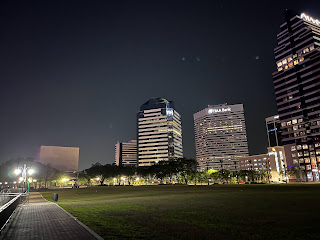












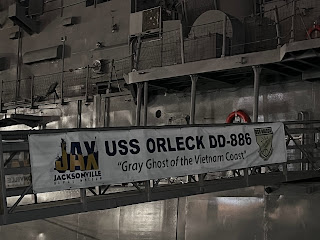



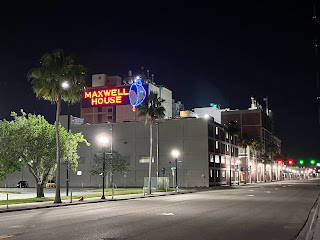

























































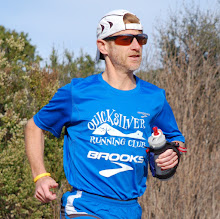
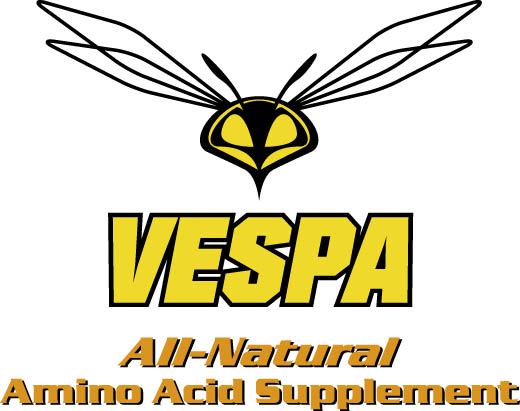


.jpg )
